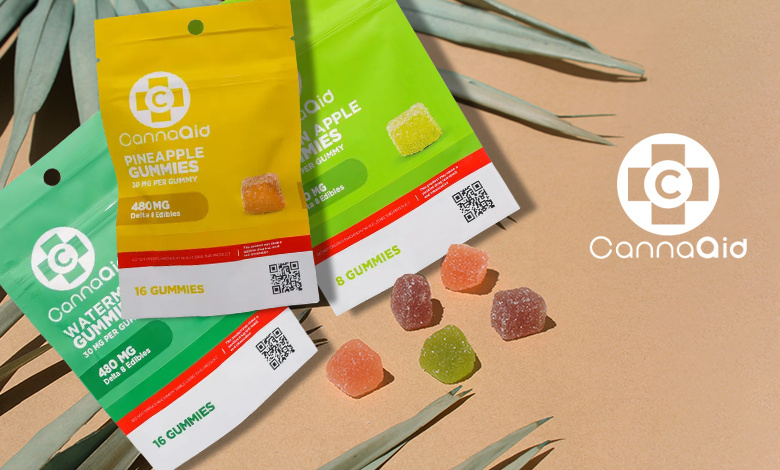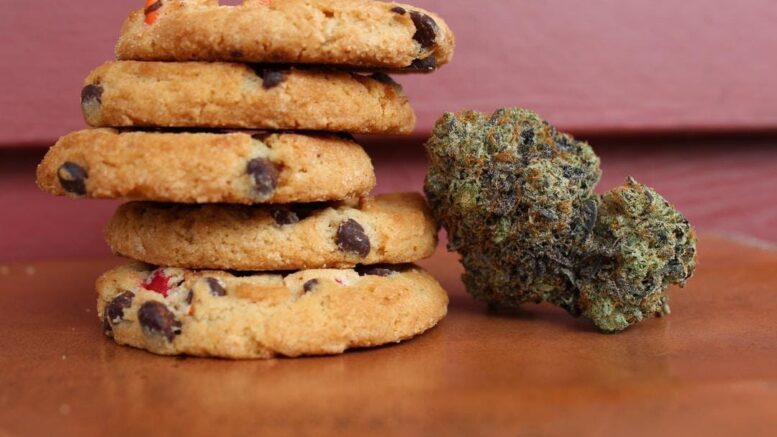Cooking with cannabis can be a fun and enjoyable way to consume marijuana, but it’s important to understand the basics before getting started. In this beginner’s guide, we’ll cover everything you need to know about making marijuana edibles, including the benefits and risks, the different types of edibles you can make, and how to properly dose your edibles.
Cooking With Cannabis
First, let’s talk about the benefits of cooking with cannabis. Edibles provide a different experience than smoking or vaporizing marijuana, as they offer a longer-lasting and often more intense high. This can be especially appealing for medical marijuana patients, as edibles can provide relief from symptoms for an extended period of time.
Cooking with cannabis can also be a healthier alternative to smoking, as it doesn’t involve the inhaling of smoke or vapor. However, it’s important to note that edibles can take longer to take effect (sometimes up to several hours), so it’s important to be patient and not to consume more until you know how the edibles will affect you.
Types of Edibles
Now, let’s talk about the different types of edibles you can make. Some popular options include brownies, cookies, gummies, and chocolate bars, but the possibilities are endless. You can also make savory edibles such as marijuana-infused pasta sauces or soups.
Before you start cooking, it’s important to understand the process of decarboxylation. This is the process of heating marijuana in order to activate the THC (tetrahydrocannabinol) and CBD (cannabidiol) in the plant. Without decarboxylation, your edibles will not have the desired psychoactive effect.
To decarboxylate your marijuana, preheat your oven to 245°F (118°C) and spread your ground cannabis out on a baking sheet. Bake for 45-60 minutes, stirring every 15 minutes. Once your marijuana is decarboxylated, it’s ready to be used in your recipes.
Now, let’s talk about dosing. Dosing marijuana edibles can be tricky, as the effects can vary greatly from person to person. It’s important to start with a small dose (especially if it’s your first time consuming edibles) and wait at least an hour before consuming more. It’s also important to note that edibles can take longer to take effect in some people, so it’s important to be patient.
A good starting point is to use 1 gram of decarboxylated marijuana for every 1 cup of butter or oil. This will give you a potent, but not overly strong, batch of edibles. You can always adjust the amount of marijuana you use based on your personal preference and tolerance.
It’s also important to label your edibles clearly and store them out of reach of children and pets. It’s a good idea to keep a record of the dosage and strain of marijuana you used in each batch of edibles, as this will help you to better understand how different strains and dosages affect you.

Now that you have a basic understanding of how to make marijuana edibles, let’s get to the fun part – the recipes! Here are a few easy and delicious recipes to get you started:
Marijuana Brownies:
Ingredients:
- 1 cup butter or oil
- 1 cup sugar
- 4 eggs
- 1 cup flour
- 1/2 cup cocoa powder
- 1 gram decarboxylated marijuana (use more or less based on personal preference)
- 1 teaspoon vanilla extract
Instructions:
- Preheat your oven to 350°F (180°C).
- In a large mixing bowl, cream together the butter or oil and sugar.
- Beat in the eggs, one at a time, until well-combined.
- In a separate bowl, mix together the flour and cocoa powder. Gradually add the dry ingredients to the wet ingredients, stirring until well-combined.
- Stir in the decarboxylated marijuana and vanilla extract.
- Pour the batter into a greased 9×9 inch baking pan.
- Bake for 25-30 minutes, or until a toothpick inserted into the center comes out clean.
- Let the brownies cool before cutting and serving.
Marijuana Gummies:
Ingredients:
- 1 cup fruit juice or puree (such as apple, orange, or strawberry)
- 2 tablespoons gelatin
- 1/4 cup honey or agave nectar (optional)
- 1 gram decarboxylated marijuana (use more or less based on personal preference)
Instructions:
- In a small saucepan, heat the fruit juice or puree over medium heat until hot.
- In a small bowl, mix together the gelatin and honey or agave nectar (if using).
- Gradually add the dry mixture to the hot fruit juice or puree, stirring until the gelatin is completely dissolved.
- Stir in the decarboxylated marijuana.
- Pour the mixture into a silicone gummy bear mold or a small, greased baking pan.
- Refrigerate until the gummies are set, about 2-3 hours.
- Once set, remove the gummies from the mold or cut into desired shape.
- Store the gummies in an airtight container in the refrigerator.
Marijuana Chocolate Bars:
Check the video at the top of the article.
Ingredients:
- 1 cup chocolate chips
- 1/2 cup coconut oil
- 1 gram decarboxylated marijuana (use more or less based on personal preference)
Instructions:
- In a small saucepan, melt the chocolate chips and coconut oil over medium heat, stirring constantly until smooth.
- Stir in the decarboxylated marijuana.
- Pour the mixture into a small, greased baking pan.
- Refrigerate until the chocolate is set, about 2-3 hours.
- Once set, cut the chocolate into desired size and shape.
- Store the chocolate in an airtight container in the refrigerator.
As you can see, cooking with cannabis can be easy and fun. Just be sure to properly decarboxylate your marijuana and start with a small dose until you know how the edibles will affect you. With a little practice, you’ll be making delicious and potent marijuana edibles in no time!
It’s important to note that in order to legally purchase and consume medical marijuana, you must get a medical card online from a licensed healthcare provider. Recreational marijuana is legal in California, but it’s important to check laws and regulations before using marijuana for recreational purposes. If you’re considering using marijuana for medical purposes, it’s important to discuss it with a healthcare professional to determine if it’s the right treatment option for you.
Article edited and fact checked by our editorial team.
